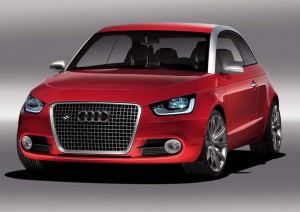
With products like the new Audi A1, the German automaker hopes to maintain its lead in the global luxury sales sweepstakes.
As it expands its lead as the world’s largest auto market, China is changing not just the rules but realigning the pecking order of the global auto industry.
For the first time, this past quarter, Mercedes-Benz saw itself slip into second place on the global luxury sales charts, behind upstart Audi, the Volkswagen AG subsidiary that has become the dominant high-line player on the Chinese scene.
But despite decades of struggle, Audi continues trying to reposition itself as a leader, rather than an also-ran in the U.S., now the globe’s second-largest auto market. And company officials say they may be in for some gains – if they can just get the factory to provide American dealers with more product.
For the first three months of 2010, it seems, Audi hit a record 264,100 vehicles worldwide, compared with just 248,500 for Daimler AG’s Mercedes brand. If the Volkswagen subsidiary can maintain that momentum it could exceed its five-year goal of becoming the world’s largest luxury brand. The original target was 2015, when Audi had hoped to boost sales to a whopping 1.5 million units annually.
The brand, based in Ingollstadt, Germany, has been steadily gaining ground, in recent years, and has been giving both BMW and Mercedes a run for their money in the home German market, as well as Europe overall. But the key to Audi’s momentum is China, where VW, overall, is the top-selling auo manufacturer, and where Audi, in particular, outsells Mercedes by roughly two-to-one.
The company’s success in the fast-emerging Asian market comes in sharp contrast to the United States, where Audi has remained a struggling second-tier player, posting sales of just over a third of top-luxury marques like best-seller Lexus.
That prompted the parent company to cut about 6,000 vehicles from U.S. dealer allocations, last year. But that didn’t account for the upturn in the American market. And now, Audi of America CEO Johan de Nysschen tells Automotive News, his dealers are running out of product.
On average, American Audi dealers have barely a 29-day supply of vehicles on their lots, about half of what is considered normal, and down from 88 days worth of product this time last year. With Audi of America sales up 35% for the first quarter, that’s a potentially serious problem.
De Nysschen says he has secured an extra 3,000 cars for the new model-year, but if the torrid pace of sales continues, it’s just a question of how soon he’ll have to go back to Germany askingfor more.
